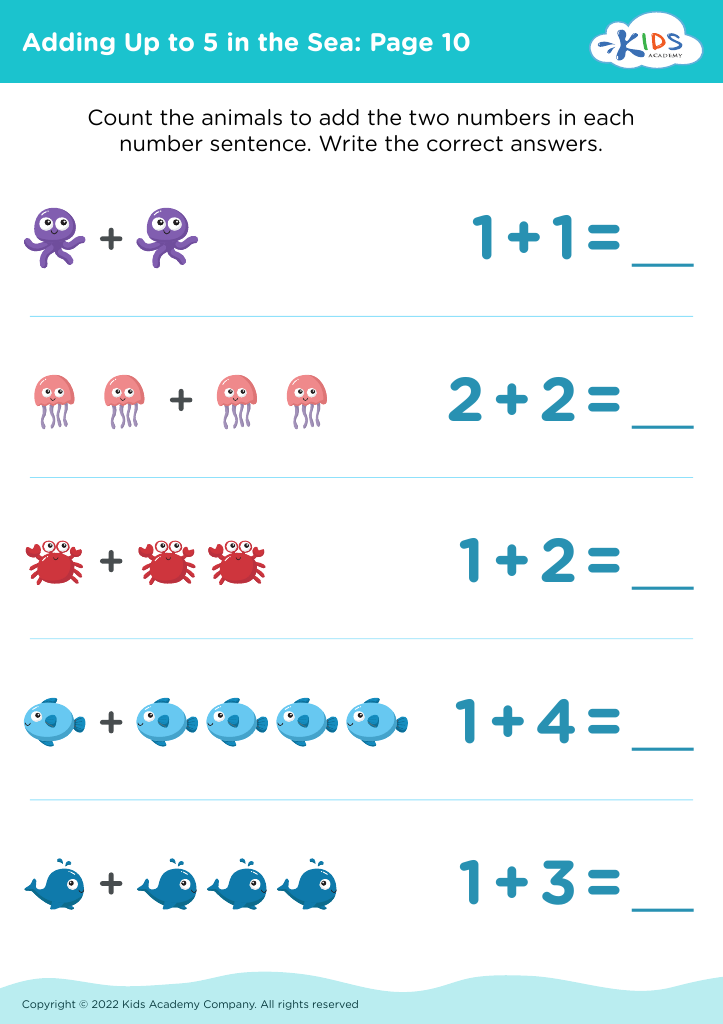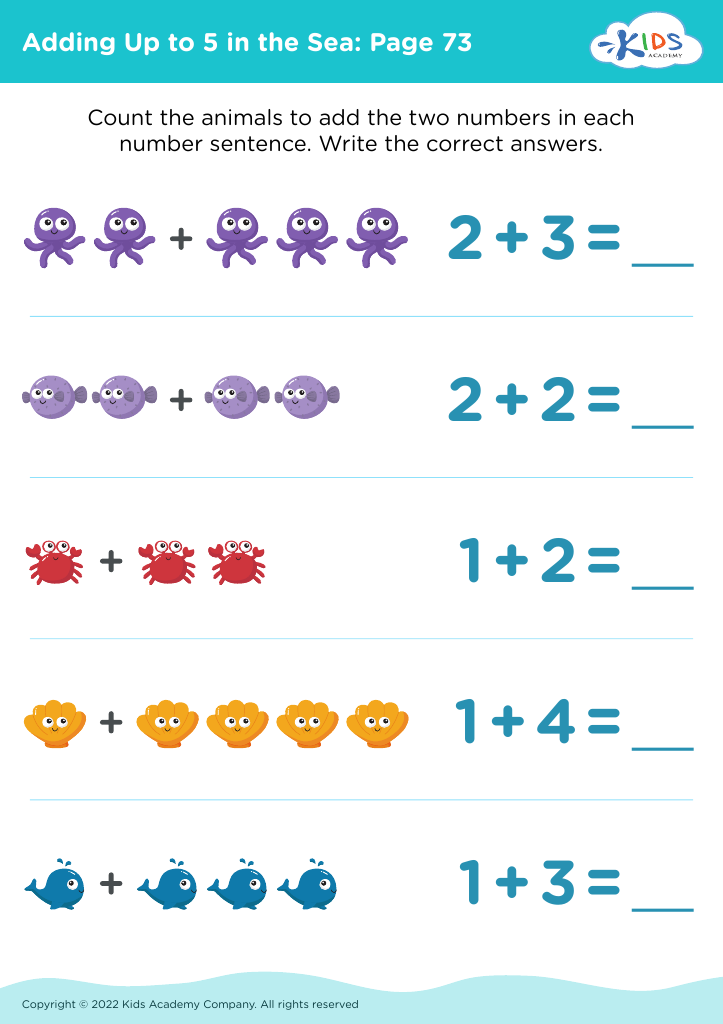Visual Learning Adding in the Sea Worksheets for Ages 4-7
18 filtered results
-
From - To
Dive into a fun learning experience with our "Visual Learning Adding in the Sea" worksheets, specially designed for kids aged 4-7. Our vibrant, sea-themed printables make learning addition an exciting adventure. These engaging worksheets harness the power of visual learning to help young children grasp basic math concepts while exploring the underwater world. Perfect for early learners, our activities promote cognitive skills, enhance counting abilities, and build a strong numerical foundation. Discover a colorful and interactive way to improve your child's math skills today with our sea-themed addition exercises—start the learning journey now!
Visual Learning Adding in the Sea for ages 4-7 is an incredibly effective educational tool that parents and teachers should prioritize for several reasons. First, young children learn best through interactive and engaging experiences. This type of learning taps into their natural curiosity and desire to explore the world around them. By using sea-themed visuals and activities, it captivates their imagination and makes the learning process enjoyable and memorable.
Second, visual learning helps children understand abstract mathematical concepts such as addition more concretely. For example, seeing pictures of fish or seashells grouped together can make it easier for them to comprehend the idea of putting items together to sum them up. These visuals serve as cognitive anchors that make abstract ideas more tangible.
Furthermore, incorporating visual aids caters to diverse learning styles. While some children excel in linguistic or auditory learning environments, others find visual stimuli more helpful. It enhances inclusivity, ensuring that all children have the opportunity to grasp foundational math skills effectively.
Lastly, making learning fun at this early stage establishes a positive attitude towards education. It encourages children to be active participants in their learning journey, fostering a lifelong love for discovery and knowledge. Therefore, Visual Learning Adding in the Sea for ages 4-7 is a delightful and impactful tool that supports early educational development.

































